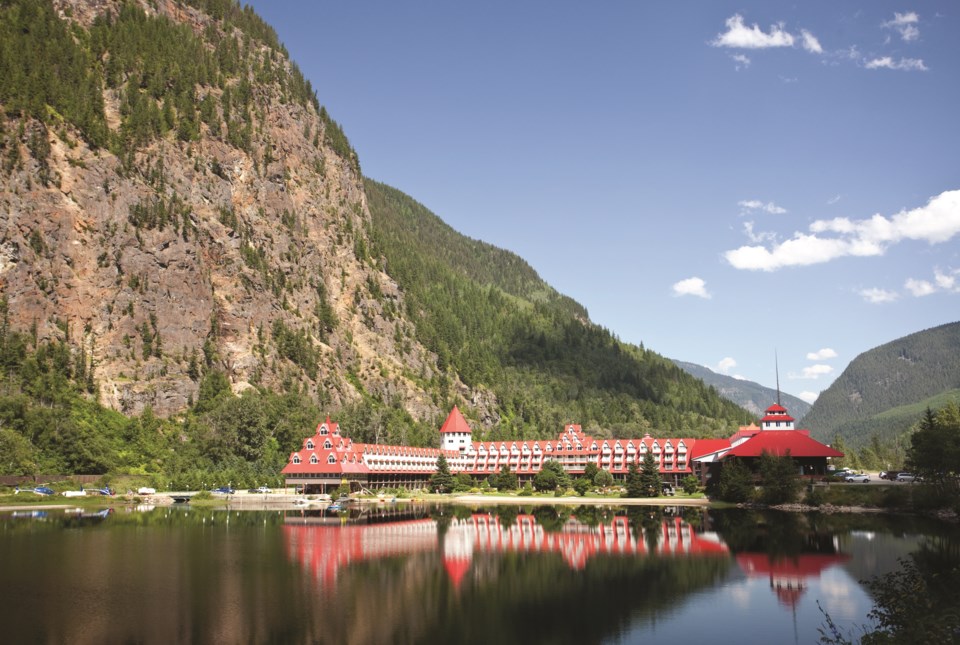Summer season is driving season, and if you’re sick of Whistler’s burgeoning weekend traffic jams, you can actually escape them by hitting the road yourself, joining those scrambling across our province’s highways to camp, kayak, fish, boat, hike, Instagram influence or just hang at the cabin. Most of these sporty folks will be off the road after Labour Day, of course, but the rest? Well, they’re just driving. Across town. Across the province. Maybe even across the country. I like to do that every few years myself, with lots of crisscrossing to other places along the way.
It’s a big ol’ country with plenty to see from a car window, but in my travels I’ve found there are two constants. First, a string of bizarre and seemingly random roadside attractions. I use that term loosely and don’t include the many odd things in this class for which stopping isn’t required to observe, like, from west to east: a giant lumberjack, giant coal truck, giant bear, giant teepee, giant Sasquatch—in northern Ontario, no less—giant thermometer, giant Canada goose, giant nickel, giant apple… etc. Second, there are the classic roadside motels strung along the Trans-Canada Highway. The two are not entirely unrelated as one often seems to be reason for the other (which, I suppose, might make them less random). Let’s talk about the former.
What exactly comprises a roadside attraction? As conceived by their proprietors, doubtless something that should captivate you so completely that you immediately want to abandon your drive, slam on the brakes, and pull off the highway to partake of it. Like, say, that weird grown-over mini-golf place on the outskirts of every town in the west, or a go-kart track in the middle of nowhere (because you are so sick of driving forward that you want to… go in circles?). Ever wondered over the roadside hallucination of B.C.’s Three Valley Gap, with its chateau right out of The Shining, heritage ghost town (which seems truly redundant), and creepy strange Enchanted Forest concession? Me, too. It’s odd, but the national winner in my mind was the absolutely cringe-worthy Hotel Madrid, with its collection of concrete dinosaurs and monster trucks that languished for decades in the monotonous bush halfway between Montreal and Quebec City. I stopped there once to pee and had my fortune told by a disembodied head inside a glass box. Fortunately, someone saw fit to demolish the place in 2011. If there’s a competition, another contender lies in the north Okanagan near Armstrong. Here, in the requisite middle of nowhere, is The Log Barn where, apparently, “The West is Truly Wild!” No surprise since this place is also referred to by road-tripping cognoscenti as Dave’s Goat Walk, the dinosaur ranch, the pumpkin farm, the pie place and any number of other possible appellations to describe a bricolage of large-scale prehistoric creatures, model birds, antique vehicles, flower gardens, a three-story chef with a pie in his hand, live goats that walk over an arched bridge above the parking lot, a food stand, and a pond full of turtles. It doesn’t get much better—or more inexplicable. If you like this kind of thing, chase down the ones along your next driving route at the very thorough roadsideattractions.ca.
And now, motels. I could go on about any aspect of this anachronistic collection of neo-Hoser architecture but that might be giving it more attention than it deserves. Instead, I’ll stick with the naming of these institutions, which you can keep track of from the road.
To start, there are thematic clusters of names (Silver Sage, Ranchman, Prairie Oasis, Cowboy Hat) or vague compass points (Superior North, Nor-West, Best Northern) that, should you be without a map, offer vague orientation. Forests and trees figure prominently in the canon (Woodland, Westwood, Black Spruce, Pine, Lone Pine, Shady Pines, Pine Grove,) and segue nicely into the “overlook” trope (Pine View, Park View, Valley View, Mountain View), through a river jag (River View, River Mist, Riverside, Deep River, High Falls) to land up on a colourless theme (White River, White Otter, White Fang) that may or may not have something to do with snow.
Equally common are descriptive pairings (Iron Bridge, Mystic Isle, Falcon Ridge, Blueberry Hill, Jackfish Lake) and odes to celestial phenomena (Sunset, Northern Lights… does Satellite count?), pastoral Victorian life (Coach House, Old Mill, Barrel Inn, The Clansmen, Carriage House) and a television show (Shady Rest—remember Petticoat Junction?)
A few generic classics (Continental, Ambassador, Traveler, Holiday, Hide Away) and cross-border throws (American, Trans Canada), pathetic portmanteaus (Sun-dek) and some that make no sense whatsoever (Pals, Red Top, Tel Star—uh, isn’t that a satellite, too?). Oddly, very few directly channel the history you’re traversing (Circle Route, Voyageur, Trading Post, Mohawk, and a couple versions of Champlain) which I find sad. Sad enough to want to pull into any of an uplifting series of names that, on the face of it, have no place in the mountains, prairies and boreal forests of our beloved land, but add an exotic flavour every time you count one, and which always make you go Hmm… (Villa Bianca, Villa Inn, Catalina, Bel-Aire, Sapphire, Flamingo, and the king—Spanish Fiesta).
I might hit the road again soon, because, of course, it’s the quickest way to Paradise… or at least its eponymous motel.
Leslie Anthony is a Whistler-based author, editor, biologist and bon vivant who has never met a mountain he didn’t like.




